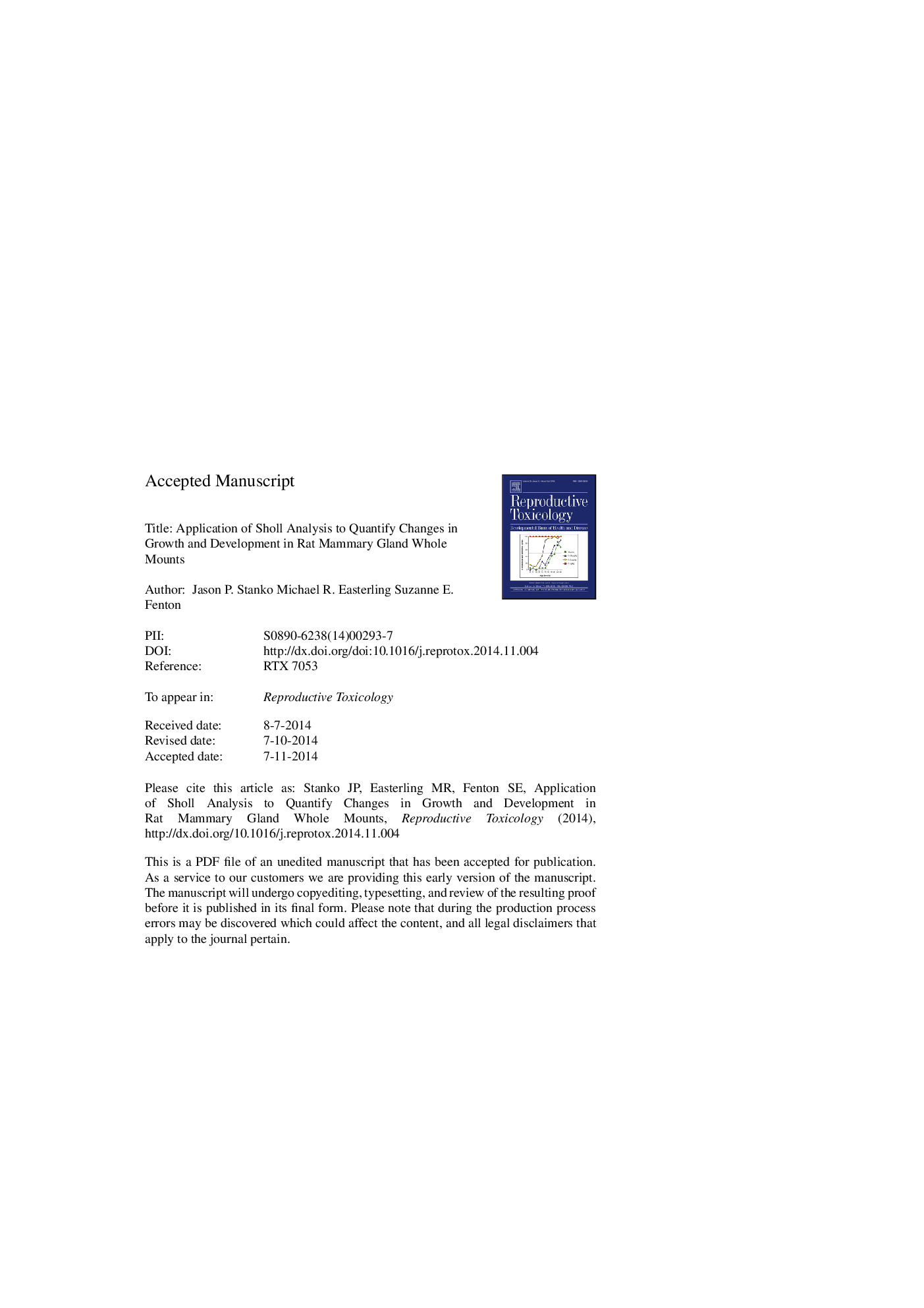| Article ID | Journal | Published Year | Pages | File Type |
|---|---|---|---|---|
| 5858413 | Reproductive Toxicology | 2015 | 32 Pages |
Abstract
Studies that utilize the rodent mammary gland (MG) as an endpoint for assessing the developmental toxicity of chemical exposures typically employ either basic dimensional measurements or developmental scoring of morphological characteristics as a means to quantify MG development. There are numerous means by which to report these developmental changes, leading to inconsistent translation across laboratories. The Sholl analysis is a method historically used for quantifying neuronal dendritic patterns. The present study describes the use of the Sholl analysis to quantify MG branching characteristics. Using this method, we were able to detect significant differences in branching density in MG of peripubertal female Sprague Dawley rats that had been exposed to vehicle or a potent estrogen. These data suggest the Sholl analysis can be an effective tool for quantitatively measuring an important characteristic of MG development and for examining associations between MG growth and density and adverse effects in the breast.
Keywords
Related Topics
Life Sciences
Environmental Science
Health, Toxicology and Mutagenesis
Authors
Jason P. Stanko, Michael R. Easterling, Suzanne E. Fenton,
